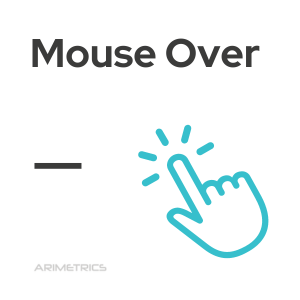 Definition
Definition
Mouse Over is a function in computer systems in which a user moves the cursor over an item on the screen and a response occurs. For example, when you move your cursor over an image on the web, you may see a pop-up message describing the image or a pop-up window showing additional details about the object on which the cursor was placed.
The fast, real-time response that occurs when using the Mouse Over depends on the operating system and software used. Overall, Mouse Over is a simple and effective way to increase interactivity between the user and the computer system.
Mouse Over Applications
Some of the most common applications of Mouse Over include navigating websites, viewing thumbnails in file browsers, viewing detailed information about items in spreadsheets, and navigating online maps.
Examples of using Mouse Over
- In web browsing, the Mouse Over is used to display additional information about links, images, buttons, or other interactive elements. For example, hovering over a link may bring up a preview of the page to which the link will be directed or a description of the page. In addition, on many websites, the Mouse Over is used to provide clues and suggestions about the functionality of page elements.
- In image and video editing programs, Mouse Over is frequently used to display additional tools and options. For example, when hovering over a brush tool in a graphic design program, a drop-down menu may appear that allows you to change the size, shape, or color of the brush. In this way, the Mouse Over facilitates access to the advanced options and functionalities of the programs.
- In content management systems and databases, the Mouse Over is used to display detailed information about individual records. For example, in a worksheet, when you hover over a cell that contains a date, a pop-up window may appear showing the exact date and time format. In this way, the Mouse Over allows quick access to detailed and relevant information.
- In games and interactive applications, the Mouse Over is used to provide visual cues and cues. For example, when hovering over an object in an adventure game, a message may appear indicating what to do with the object or how to interact with it. In this way, the Mouse Over increases the accessibility and playability of games and applications.
Other types of mouse events
- Click: It is the most common mouse event. Occurs when the user presses and releases the left mouse button. It is used to activate interactive elements on the screen, such as buttons, links, menus, and other elements.
- Double click: This event occurs when the user double-clicks with the left mouse button on an element on the screen. On many systems, it is used to enlarge or shrink an image or to open a file or folder.
- Right button: The right mouse button can also be used to activate interactive elements. Right-clicking an item can display additional options or open context menus.
- Drag and drop: This event occurs when the user holds down the left mouse button and drags an item to a new location on the screen. It is also used to select multiple items in a list or in a file browser.
- Mouse wheel: Many mice have a wheel in the center that can be used to scroll up and down the screen. This event occurs when you rotate the mouse wheel up or down. In web browsers, it is used to navigate web pages.
